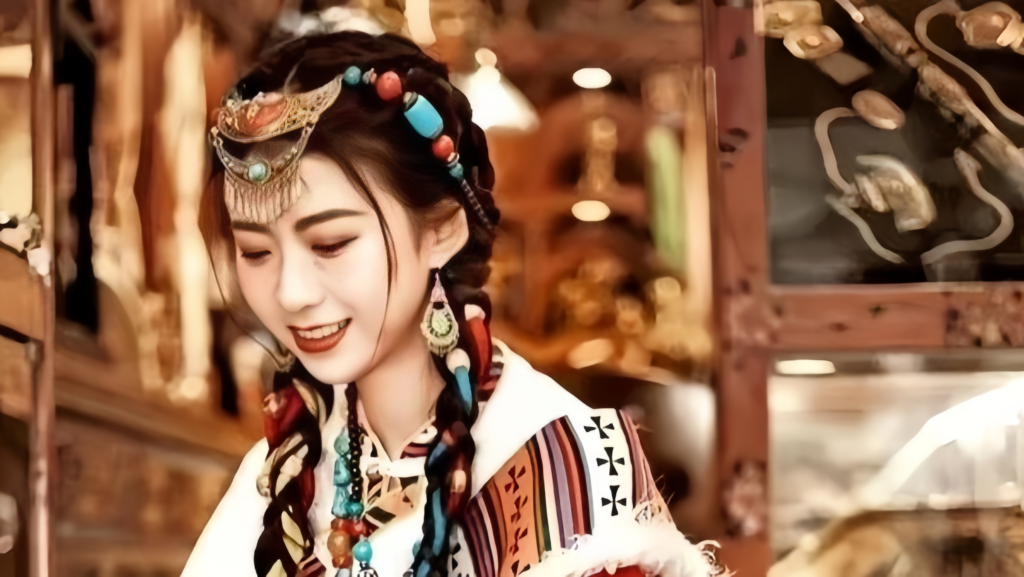Hanfu Introduction: Origins, Cultural and Evolution of Hanfu

Hanfu Introduction
Hanfu, the traditional attire of the Han people, is not just a type of clothing; it is an important part of Chinese culture, rich in history and meaning. The Hanfu introduction serves as a gateway to understanding Chinese cultural heritage. The origins of Hanfu, its evolution over time, and the cultural significance it carries have always been subjects of great interest. In this article, we will explore the history and evolution of Hanfu, how it has changed over the centuries, and uncover the deep cultural meanings embedded in this iconic garment, providing a fuller understanding of its role in Chinese heritage.

The Origins of Hanfu
The history and evolution of Hanfu can be traced back thousands of years. According to historical records, during the Xia, Shang, and Zhou dynasties, people began to pay attention to the rituals and standards surrounding clothing. It was during this time that a regional clothing system began to take shape. This period laid the foundation for what would eventually become Hanfu, with the early designs and materials already hinting at what was to come.
The formal establishment of Hanfu occurred during the Spring and Autumn and Warring States periods. This was a time of social and economic growth, which led to significant changes in clothing styles. With the advent of iron tools, the textile industry also began to thrive, and people started to use materials such as silk and linen to make their clothes. At the same time, the clothing’s design evolved, with styles like the “Yi” (衣) and “Shen” (深衣) becoming popular, marking the birth of the basic Hanfu style.
The Evolution of Hanfu
The history and evolution of Hanfu is a long and intricate story, spanning many dynasties. From the Spring and Autumn period through the Qin and Han dynasties, Hanfu slowly transitioned from being a garment reserved for the aristocracy to one worn by the common people. During these times, the design, materials, and colors of Hanfu continued to develop and improve. Hanfu was also influenced by external cultures, with styles like the “Hu” (胡服) from the northern tribes and “Xiyu” (西域) from the Western regions, leading to the diversification of clothing styles.
The Tang and Song dynasties saw Hanfu reach its peak. During this period, the garments became more varied and colorful, and the emphasis on the ceremonial and decorative aspects of Hanfu increased. As the economy grew, the craftsmanship behind Hanfu improved, making these garments more refined and luxurious.
However, the Ming and Qing dynasties marked the decline of Hanfu. With the influence of Western culture and the rise of modernization, Hanfu gradually lost its significance in daily life. Despite this, it was still worn for certain ceremonies and by particular groups, preserving a sense of tradition in select contexts.
From Zhou to Ming dynasties, Hanfu styles inspire modern revival.
The Cultural Significance of Hanfu
As an essential part of traditional Chinese clothing, Hanfu carries a rich legacy of ritual and etiquette. In ancient times, clothing was not just a practical necessity; it was also a symbol of one’s social status. The design, color, and material of Hanfu all reflected the cultural values of respect, hierarchy, and order. For example, official garments were elaborate, richly colored, and adorned with intricate details, while the clothing of commoners was simpler and more modest. This distinction highlighted the social hierarchy and reinforced the importance of ritual in Chinese society.
Aesthetic Culture Hanfu
also embodies the aesthetic values of traditional China. People in ancient times were very mindful of the visual impact and decoration of their clothing. Hanfu’s intricate designs, vibrant colors, and beautiful patterns reflect the aesthetic pursuit of beauty and harmony in Chinese culture. More than just being a physical garment, Hanfu sought to blend with the natural world, echoing the ancient Chinese philosophy of harmony between humanity and nature.
Spiritual and Cultural Identity
Beyond its practical and aesthetic value, Hanfu carries deep spiritual significance. It served as a means of expressing one’s aspirations for a better life and as a symbol of pride in one’s family, heritage, and nation. Wearing Hanfu was often seen as a way to honor one’s cultural roots and to show respect for tradition. This sense of identity and belonging still holds great meaning today, reminding modern people of their connection to a rich and ancient culture.
Conclusion
By exploring the history and evolution of Hanfu, we can see how deeply intertwined this traditional garment is with Chinese history and culture. Hanfu is more than just a piece of clothing; it is a representation of ancient Chinese social life and values, a cultural artifact that has evolved through centuries of history. In today’s world, the preservation and promotion of Hanfu is not only about keeping a cultural tradition alive but also about strengthening our connection to the past and inspiring future generations to appreciate their heritage.
Therefore, it is crucial to continue to protect and pass on the Hanfu culture. By studying its history, appreciating its design, and innovating with contemporary ideas, we can ensure that this beautiful symbol of Chinese culture will continue to thrive and contribute to the broader global appreciation of human heritage.
After exploring Hanfu’s evolution across dynasties, learn how to wear it respectfully to honor hanfu cultural heritage.





Responses